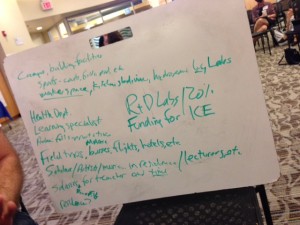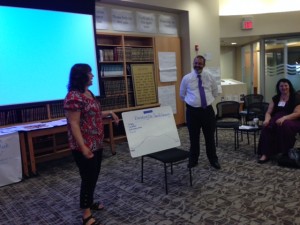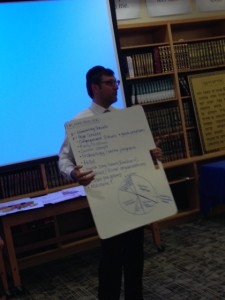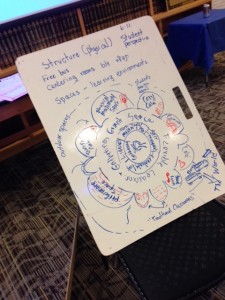We know you’re busy preparing for the opening of school. One of the topics we discussed at the Sandbox and in conversations with educators in a variety of schools is how to start and sustain culture change. We know change is hard, and it involves the commitment of many, many stakeholders at an institution. One of the things Eliezer and I will be doing in the I.D.E.A. Schools Network is chronicling the process of change in the schools in which we’re based, Eliezer at Valley Torah High School in Los Angeles, CA, and me at Magen David High School in Brooklyn, NY. In the meantime, we’ve had several requests from individuals for Matt Williams’ Culture Change workshops from Day Three of the Sandbox. Here’s the Sandbox video about Day Three:
And here are Matt’s workshops, which were fun, engaging, and thought-provoking. Thanks, Matt, for traveling from Stanford University
Workshop One:
The Ten Billion Dollar Game
The Jewish communal infrastructure is, as the Forward has pointed out, about as large as CBS. The industry of Jewish education alone probably costs in the neighborhood of ten billion dollars annually. Thinking from 30,000 feet and taking seriously the Jewish journeys of all its students, children and adults, how would you allocate these funds? How much would we decide camps should get? Schools? Birthright? Programs for the elderly? How do we even begin to make that decision?
This thought experiment is a sobering process that requires difficult decisions and ruthless analyses. But it is also an empowering opportunity to reconsider your place within the Jewish education eco-system and your capacity to be a value-added change agent in your particular location in the interconnected network.
Below are Sandbox participants describing how they would allocate their hypothetical 10 billion dollars. One fascinating finding from the exercise was how important attendees felt Birthright is for the Jewish ecosystem. There was definite consensus that the program is doing something good and vital for Jewish life today. Another great idea to emerge from the workshop was from Kaylee Frager, an educator from JCDS Northern California: she said Matt’s exercise made her wonder about giving her students the course syllabus and the number of hours they meet over the year and then tasking them with allocating hours to each topic. We love opportunities like that for student voice to be heard.
Workshop Two:
How to Build the Perfect School

Sandbox participants imagine their ideal schools
In 17th century Amsterdam, the members of what was known as the Portuguese Nation (Portuguese refugees from the Expulsion) set out to build the perfect Jewish day school. What makes their story so fascinating and so salient is that, for starters, each family controlled a significant amount of the country’s capital. They were a filthy rich community. And I don’t mean Jewish American wealthy, I mean like Russian tycoon wealthy. They even were committed to educating the relatively poor members of their community. Their schools often had leftover scholarship money; think about that for a second… Also, conversely or perhaps relatedly, the system is famous or infamous for producing one of the greatest philosophers of all time, the man considered by many to be the first modern thinkers in history - Benedict Spinoza.
This parable, for all of the reasons implied, serves as a useful platform for a thought experiment. Stepping back, if resources weren’t a problem, what would your school look like? And would you be happy with Spinoza as the outcome?















Leave a reply
You must be logged in to post a comment.